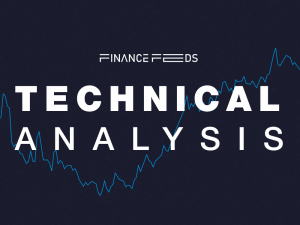LMAX calls the banks up on last look execution: says “Only abolition is achievable”
LMAX begins championing the cause of no-last look execution once again, raising the question of what constitutes good FX market practice. We also put our opinion forward.

Innovative British firm LMAX Exchange whose service differs somewhat from the norm as its open order book is driven by streaming, non ‘last look’ limit orders supplied by top tier banks and institutional liquidity providers, has challenged the accepted and widely practiced execution model that is in use by the vast majority of major banks, particularly the procedure of ‘last look.’
Last Look simply refers to the ability that liquidity providers have to reject an order even when the order matches the liquidity provider quoted price. Essentially, the liquidity provider gets one last chance or look to decide whether it wants to take the other side of an order.
Despite the practice being widely accepted and used by most institutions, LMAX has been championing the cause, relatively quietly, of operating a no-last look execution model since its establishment at the beginning of this decade, and has explored how to further this in detail.
This week, it is clear that LMAX is continuing to explore this model, by including it as part of its anonymous FX market survey which cites the perspectives of the Bank for International Settlements Foreign Exchange Working Group (FXWG) new Global Code of Conduct, in its first-phase.
David Mercer, CEO of LMAX considers the working group’s Fair and Effective Makets Review (FEMR) to be full of sound ideas and appropriate sentiments, however he also believes that the current code of conduct set out by the FXWG is too narrow in focus and impossible to enforce.
Bearing in mind that 70% of global FX trading is conducted electronically, Mr. Mercer believes that there is a central importance required in restoring trust in FX and as the adherence mechanism to enforce the code is not due to be completed until next year’s second phase, his opinion is that the industry cannot afford to wait another 12 months for the code to be completed.
LMAX believes that it is particularly important that the industry moves to combat market practices that are undermining trust in FX. Foremost among these is the use of ‘last look’, which LMAX Exchange has frequently said the market should abolish.
Controversially, LMAX states that it conducted a survey into this and one of the top matters that respondents state should be abolished is the practice of last look execution.
“Depressingly, those who are shaping the code seem to advocate standardisation of this badly broken and opaque market practice” states Mr. Mercer.
From LMAX perspective, the practice of ‘last look’ is at the heart of fairness and transparency in the FX market. At best, it is an anachronism, designed to protect market makers in a way that today’s technology has now made unnecessary. At worst, LMAX thinks that it feels to some traders like a market practice that fundamentally and unfairly balances trade execution against them.
Aside from this, LMAX touched on b-book execution, stating that 58% of its survey respondents were not happy to trade with a b-book brokerage, whereas 66% stated that every transaction that takes place via a b-book broker should be disclosed, and 71% concurred that FX trading will eventually move to execution-only venues.
A year ago, it may have been looking as though some retail FX would be moved onto exchanges, however FinanceFeeds conducted extensive research into this, and whilst senior executives with a proponency toward exchange traded FX and those against it discussed it in great detail, it is now clear that this will not happen and actually, FinanceFeeds position is that the b-book is alive and well, and in our opinion FX will not move to execution-only venues.
What is interesting is the lack of full understanding by many traders and market participants alike that LMAX levels at the entire business. According to its research, 51% of institutions which took part in the survey had an awareness of last look, whereas 48% of professionals understood it properly.
Furthermore, LMAX cites that those who are aware of the practice, rated it as the most unacceptable FX practice, ahead of dark pools or internalization with 70% of respondents considering the use of last look whilst pre-hedging to be unacceptable FX market practice, and 62% saying that any use of last look execution is unacceptable, ahead of 46% who said internalization of orders is unacceptable FX market practice.
FinanceFeeds believes that internalization (warehousing, or operating a b-book) is perfectly acceptable practice as long as the price that is being provided and the order itself is being executed in a manner that echoes real market prices. There is nothing wrong with risk management. What is wrong is b-booking trades by using prices generated in-house with no feed from a prime brokerage or liquidity provider.
With regard to the difference of opinions between bank and non-bank respondents to LMAX survey, there is a dichotomy. 33% of banks believe last look execution should be abolished, whereas according to LMAX, 79% of non-bank participants think it should be abolished.
What was relatively unanimous is that almost all participants, bank and non-bank, told LMAX that they believe that the use of last look execution should be disclosed.
Certainly FinanceFeeds concurs with LMAX findings that the market share of non-bank liquidity providers will increase. Out of the respondents, 75% of non-bank participants believe that the market share of such liquidity providers will increase.
From FinanceFeeds own research, AFX Group, ADS Securities London, and Invast Global have all launched institutional divisions to provide liquidity to other brokers, and FXCM restarted its institutional division.
Better prime of prime relationships are indeed critical especially in these times of difficulties in obtaining credit from Tier 1 banks for OTC derivatives brokers due to banks being very wary of exposure to counterparty credit default risk.
Bridge providers and integration specialists are going down the ecosystem model route, ensuring that they lead this initiative.
LMAX states that a respondant explained “In an ideal world, I would like to see that FX should be traded through a single global exchange, where all orders are processed and so the best prices can be hit regardless of the liquidity provider.”
Whilst ideologically sound, FinanceFeeds understands that this is very unlikely to come to fruition, largely because of the prohbitive exchange membership and clearing fees, plus the extra layer in the execution stack which could cause latency.
Indeed, a very interesting perspective, even if perhaps not entirely unbiased and the identities of those surveyed having been masked, as LMAX is a no-last look facility, however these are points that are worthy of discussion nonetheless.









